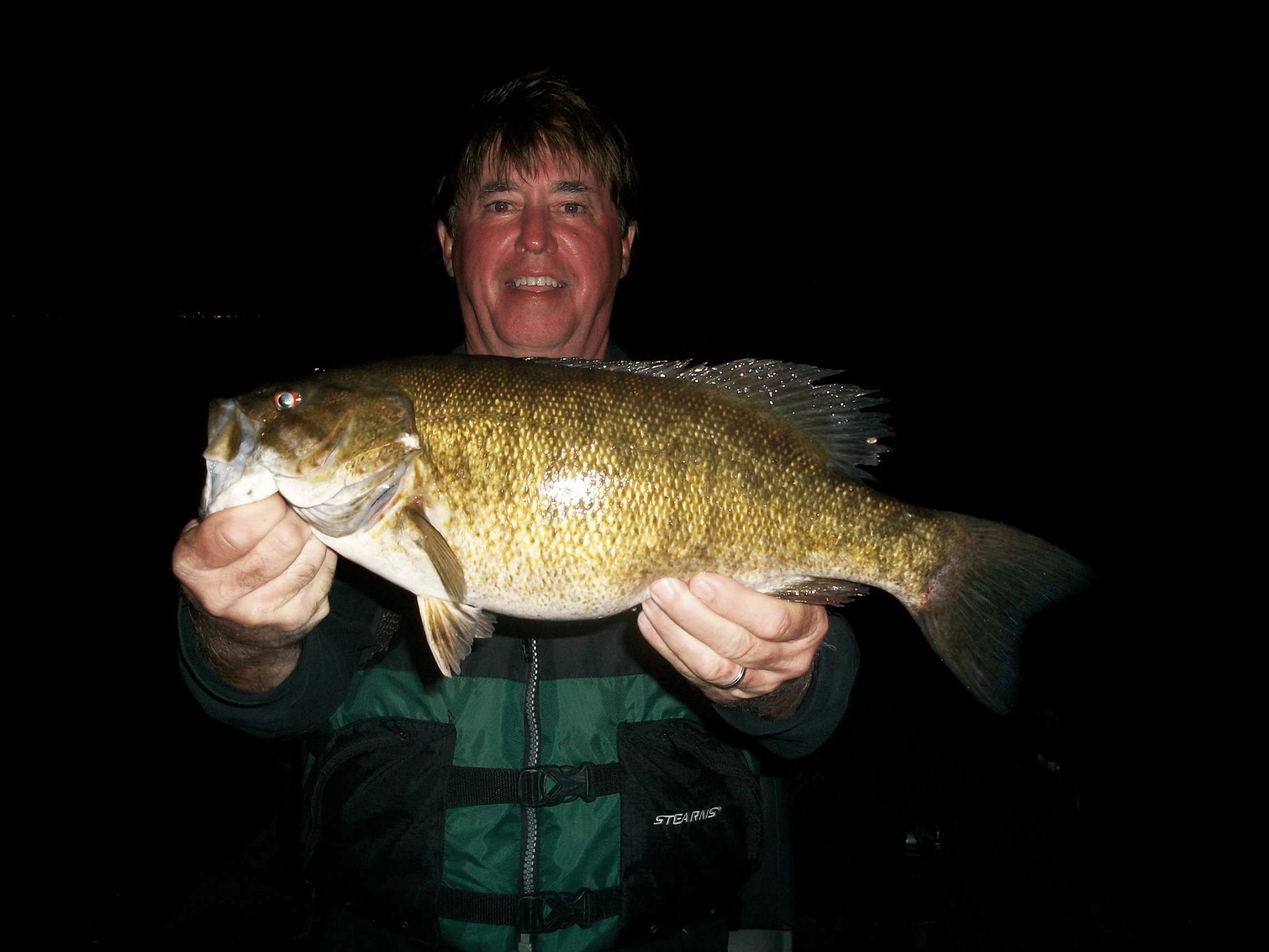Chasing Nighttime Fish

Chasing Nighttime Fish
How’s this for fishing the first night of this past Walleye Opener on West Okoboji? Six walleyes 15-16 inches, another 12 walleyes in the slot from 17-22 inches, 5 walleyes over the slot with the largest at 25 inches. Oh, and a 22.5-inch/7-pound 4-ounce trophy smallmouth! Not a bad night’s work, I’d say!
However, for Shane Akin, owner of Great Lakes Guide Service, more often than not, that’s a normal night’s effort. For over 30 year, Shane Akin has anticipated night fishing on West Okoboji from the early May opener through the first three weeks of May, and now he shares this night bite success with his fishing clients. Over the years, Akin has learned the ins and outs of pulling crankbaits at night. “Like with all trolling, trolling crankbaits at night is a science. After all of these years, there is kind of a feel about what to use, where to fish and how fast to go. Every night is a little bit different, and it is important to be able to adapt to those nightly changes.”
Obviously Akin and his clients are targeting trophy nighttime walleyes, but the chances of catching a trophy smallmouth bass over 5 pounds is excellent. In the early years, Akin thought the smallmouth bass were taken mostly by chance, but not anymore. “We are working out from rocky points and over shallow gravely and rocky flats. The walleyes are still hanging out there after spawn, and the smallmouth are frequenting the same areas. Although we will catch mostly walleyes, every time out we know there is the chance of catching one or more trophy smallies.”
The 2020 opener found Akin and his partner Mark McKeever from Council Bluffs catching walleyes as usual. However, the highlight came around 4 in the morning, when McKeever set the hook on what at first appeared to be a trophy walleye. However, when it went air born, they both knew it was one huge smallmouth bass. Sure enough, McKeever boated the 22.5”/7-pound 4-ounce smallmouth bass, which was only 8 ounces off the state record. Best of all, after a few photos, she was carefully released and is once again swimming in West Okoboji. Exactly two years earlier, McKeever boated a 6-pound 8-ounce/21.75-inch smallmouth.
The plan
The key on West Okoboji is to work 7-11’ of water in the shallows and on shallow bars. Akin finds that darker, cloudier nights are better than the starlit nights. “I’m sure that has to do with the clear water. A calm night is also tougher than a night with a 5-10 mph breeze. Trolling speed is usually anywhere from 1.5 to 2.0 mph.”
How deep do you run the baits? Until he gets things dialed in, Akin will run the baits anywhere from 1-3 feet off the bottom. That can change if the fish choose one depth over the others.
This is not a presentation where you can just throw out a crankbait and take off. Recently, Akin had a couple of friends wanting to try this type of fishing. So, he gave them the basics, some areas to fish, baits to use and how fast to troll. The next day he talked to them and he could sense their frustration when they told him, “We didn’t catch a thing!” Then he found out they were trolling about 2-3 feet too deep and only going about 1 mph. The old adage “practice makes perfect” certainly fits in here. It comes with practice, and proper repetition is the key to success!
Baits and rods
When fishing with a single client, Akin will run a 10-foot rod/baitcaster in a rod holder out of each side of the boat and then two spinning reels straight out the back. The baits used with the the baitcasters include Flicker Shads or Shad Raps. The spinning rods will have a Smithwick Rogue, Berkley Cutter 90 or a #11 Floating Rap. “Each of us will hold a spinning rod, and every minute or so, we will pull the bait forward and then let it back. This surge will many times induce a strike rather than just a straight pull.”
Akin also likes to mix colors to start the night. “Even though one color might have been hot the night before, each night can be different. So, I will mix colors until one bait catches more fish than the others. Then we’ll begin to switch.” Akin’s go-to colors include original perch, gold and black, silver and black and hot steel. “So far this year, the hot steel has been better.”
Every once in a while, there will be those magical nights where nothing goes wrong. Of course, there are the nights where the bites are harder to come by. On those nights, Akin knows he has to beware of sticking with a prior night’s hotspot. “It’s normal to want to stay on a spot where they the night before, but you have to be willing to change things up and try other spots. You can’t fish yesterday’s memories!”
Will this work on other lakes? Akin believes so and has successfully done this type of fishing on neighboring Big Spirit Lake and on Mille Lacs Lake in Minnesota.
Summer bite
Even though the May bite will change, Akin says night fishing for smallmouth can continue to be good in the summer months. Instead of trolling, however, it’s now time to cast. “The bass are now relating to deep weedlines in 15-25 feet of water. So, anglers will cast lipless crankbaits like a Rat-L-Trap, Rapala or Strike King’s Red Eye Shad. The key here is to rip the baits through the weeds.”
by Steve Weisman
August 2020
Check Out this Cane Pole Fishing Article for something similar –


